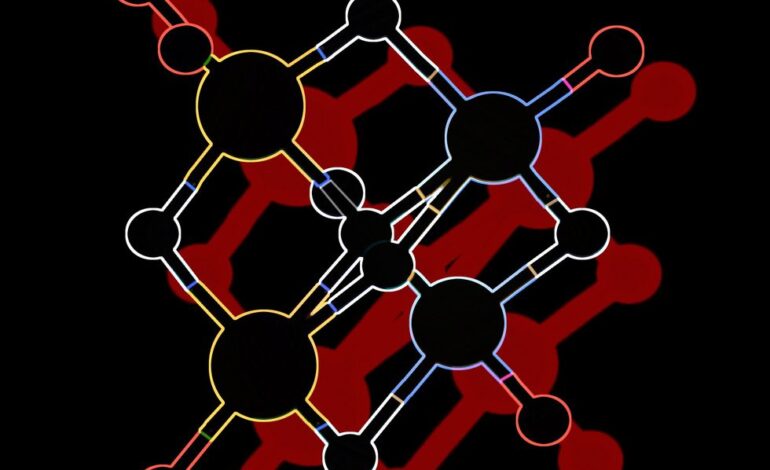Microsoft Uncovers New Battery Material Using AI Technology

Researchers at Microsoft have made a significant breakthrough in battery technology by identifying a new material that could reduce lithium usage in rechargeable batteries. This discovery emerged from a vast pool of 32 million potential candidates, with the help of artificial intelligence (AI), which enabled the team to isolate a promising candidate in just 80 hours. The material, known as NaxLi3−xYCl6, is now set to be synthesized and tested by the Pacific Northwest National Laboratory.
The initiative began as part of Microsoft’s effort to demonstrate AI’s capabilities in addressing complex challenges in materials science. According to Nathan Baker, project leader for Azure Quantum Elements, the aim was to showcase how AI can accelerate scientific discovery by filtering through millions of material options much faster than traditional methods allow. Baker stated, “Our goal was to take one of these AI models and show the promise of accelerating scientific discovery—sifting through 32.5 million materials candidates and showing that we could do it in a matter of hours, not years.”
The team’s AI model, called the M3GNet framework, accelerated simulations of molecular dynamics to assess key properties of various materials. Initially, researchers tasked the model with integrating new chemical elements into known crystal structures, which reduced the candidate pool from 32 million to 500,000. AI further refined this selection to just 800 materials based on their chemical properties suitable for battery applications. Ultimately, traditional computing methods and human expertise revealed the novel material, which promises to utilize 70 percent less lithium than batteries currently available on the market.
AI’s Expanding Role in Battery Research
Microsoft’s achievement is part of a larger trend in which researchers globally are leveraging AI to devise next-generation battery technologies. These innovations aim to replace or enhance lithium-ion batteries, which heavily rely on scarce and costly elements. New designs could not only utilize more abundant materials but also address safety concerns associated with lithium-based liquid electrolytes while enhancing energy density.
Dibakar Datta, an associate professor at the New Jersey Institute of Technology, highlighted the importance of AI in this pursuit. His research, published in August, identified five candidate materials that could outperform lithium-ion batteries. Datta’s work focuses on multivalent batteries, which use ions capable of carrying multiple charge levels, unlike the single charge of lithium batteries. This advancement could significantly increase energy storage capacity, although it presents challenges due to the larger size of ions from elements like magnesium and calcium.
To address these complexities, Datta employed a crystal diffusion variational autoencoder (CDVAE) that proposes new materials, alongside a large language model to identify the most stable candidates. This dual approach successfully narrowed the search down to five porous materials suitable for battery applications.
Innovations from IBM and Quantum Computing Prospects
The research frontier extends beyond Microsoft, with IBM also adopting AI to discover new electrolyte candidates. Their approach focuses on identifying chemical formulations that exhibit higher electric conductivity than the lithium salts presently used. The IBM team has developed chemical foundation models trained on data from billions of molecules, enabling them to predict essential properties for battery applications effectively.
Young-Hye Na, a principal research staff member at IBM Research, explained that their work aims to explore new combinations of existing materials, enhancing the potential for next-generation batteries. The team is collaborating with an unnamed electric vehicle manufacturer to develop high-performance electrolytes for high-voltage batteries.
In addition to material discovery, IBM is advancing the testing of new battery setups through the use of digital twins—virtual models that simulate a battery’s performance over its lifespan. This approach allows researchers to predict how specific battery chemistries will behave over time, significantly enhancing the efficiency of development processes.
Looking to the future, both Microsoft and IBM are exploring the potential of quantum computing to further revolutionize battery research. As Na pointed out, while current AI tools are invaluable for investigating battery chemistry, quantum computing holds the capacity to model complex systems without the limitations faced by classical computers. Baker emphasized this point, stating, “We know classical computers have problems generating accurate answers for complex substances, complex molecules, complex materials. So our goal right now is to actually change the way the data is generated by bringing quantum into the loop so that we have higher accuracy data for training ML models.”
As AI continues to evolve, its integration into battery technology could pave the way for safer, more efficient, and eco-friendly energy storage solutions in the coming years.






